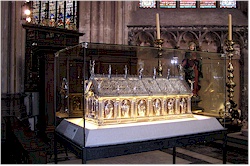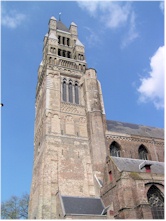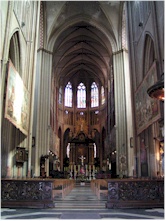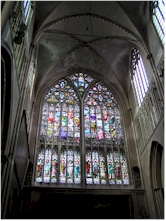|
Picture: view on the tower of the Saint-Saviours cathedral from the Steenstraat |
|
» Eating » Sleeping facilities » Going out in Bruges » Fixed events » Beguinage » Belfry and halls » Chapel of the Holy Blood » Court of the Princes » Dunes abbey » Guild houses of Bruges » Hospices of Bruges » Jerusalem church » Nation houses » Our Ladies church » Poortersloge » St-Anna's church » St-Donatian's cathedral » St-John's hospital » St-Saviour's cathedral » Town gates » Town hall » Windmills of Bruges » Complete overview... » Archeology museum » Brangwyn museum » Brewery museum » Chocolate museum » Diamant museum » Folklore museum » Frites museum » Groeninghe museum » Guido Gezelle museum » Halve Maan » Lace museum » Lamps museum » Memling museum » Museum of Fine Arts » Salvador Dali museum » St-Janshuismill » St-John's hospital » Complete overview... » Boterhuis » Boudewijn Seapark » Burg » Canals (Reien) » Coupure » De Garre » Grote Markt » Historium » Huidevettersplein » Jan Van Eyckplein » Lake of Love (Minnewater) » Rozenhoedkaai » Simon Stevinplein » 't Zand » Complete overview...
|
Saint-Saviour's cathedral General. Saint-Saviour's cathedral (Sint-Salvatorskathedraal) is the main religious building of the town. It became a cathedral only in 1834 when the diocese of Bruges was reinstated after the French occupation. The tower still bears the traces of the earlier romanesque church, giving it a massive outlook.
The cathedral also has a museum. It holds a collection of priceless pieces from the cathedral's treasury but also from the former Saint-Donatians cathedral and other religious sites. Brief history. The history of the church is marked by several fires that each time required large-scale reconstructions. The first church on this place was probably erected somewhere in the 9th century and became an independent parish by the end of the 11th century. After a fire, the construction of a new church in romanesque style started in 1127. Traces of that building can still be found in the base of the tower. This building's existence was short because by the end of the 13th century it had to be reconstructed, this time in gothic style. In its core, it is the building as it exists now. In 1358, again a part of the church is destroyed by yet another fire. Repairs followed and the occasion was used to expand the place. During the 15th and 16th century several additions were made. In 1834, the diocese of Bruges was reinstated after it was abolished during the French occupation. Since the Saint-Donatians cathedral was demolished in 1799, Bruges had to look for a new cathedral. The choice fell on the Saint-Saviour's church. Another fire in 1839 damaged the roofs and the tower. As a consequence, the tower was redesigned and received its current look. Location: Sint-Salvatorskerkhof.
Picture 1: relic shrine in the
cathedral
|
» getting to Bruges » transport, tours, links,...
|
|
© xplorengo.com. Information is provided from the location and various sources, we do not hold any responsibility with regard to information provided by others. xplorengo is not a travel agency and does not promote or organize trips we therefore hold no responsibility with regard to third parties that promote their services via us. No information or pictures can be copied or distributed in any way without written permission of xplorengo.com. All pictures are made and copyrighted by Hendrik De Leyn unless mentioned otherwise [Contact information]. |



